Gumbo, a stew of anything that walks, flies, swims, or crawls, reflects the diverse origins of New Orleans cuisine. Some say the name "gumbo" comes from "okingumbo," the African name for the okra plant. Others say "gumbo" comes from the Choctaw word "kombo" which means sassafras, another common thickener of the dish. One of the inspirations for gumbo was the French seafood stew bouillabaisse; but the ingredients also take some direction from a Spanish sofrito. The use of file powder (ground sassafras) is a Native American influence, as was the use of local seafood. Slaves from West Africa introduced okra to the dish.
Gumbo is a very broad term, including gumbos thickened with okra, file powder, or roux, as well as both Cajun and Creole interpretations of the stew. Okra is added early to the dish and stewed to release its thickening powers, while file powder is added at the end, or even at the table. A roux, a mixture of flour and oil toasted on the stove, adds both flavor and thickness to the gumbo. A Cajun gumbo cooks the roux to a darker hue. A Creole roux tends to be lighter and a Creole gumbo also is likely to include tomatoes, an Italian influence. Creole cuisine was from a higher economic class, which is shown in the occasional inclusion of ingredients such as cream.
This shrimp, chicken, and andouille sausage gumbo is thickened with both a roux and okra, and is more Cajun than Creole, though I don't think I cooked the roux quite long enough.
Gumbo
3 chickens, roasted
2 lb. shrimp, uncooked and with shell on (deveined if possible, to save you some work)
1/2 C flour
1/2 C vegetable oil or other fat with a high burning point (not butter)
1 white onion, diced
1 bell pepper, diced
2 stalks of celery, diced
6 C chicken broth (from the roast chickens; see below)
3 C shrimp broth (from the shrimp shells; see below)
4 andouille sausages, diced
20 oz. okra, sliced into thick coins, (mine was frozen, but fresh is awesome, too)
1 Tb cayenne pepper
1 Tb ground black pepper
2 tsp paprika
2 tsp sage
2 tsp cumin
2 tsp thyme
2 tsp parsley
2 tsp salt
The day before:
Strip the chicken from the three birds. Store the meat. Boil the leftover chicken carcasses in a large pot with enough water to cover for several hours. Refrigerate resulting broth.
While the chicken broth is cooking, shell (and devein, if necessary) the shrimp. Boil the shrimp shells in several cups of water for about an hour. Refrigerate broth.
If you're a trooper (or Gumbo Day itself is very busy) make the roux now as well. Refrigerate.
Gumbo Day:
In a large pot of your choice (I used a heavy cast iron pot), mix the flour and oil. Turn on the heat medium low. You've got to stir and watch this carefully for 15-30 minutes, until it reaches your desired level of toastedness. I probably could've gotten my roux to be a bit darker, but I decided a preferred a lighter roux to a burnt one.
A roux is equal parts fat (butter, lard, olive oil) and flour cooked carefully to varying degrees of color. The darker the roux, the stronger the flavor (and the smaller the thickening ability). What a roux is, basically, is deep fried flour. A Cajun gumbo typically uses a much darker roux than a Creole gumbo. If you're making a dark (Cajun) roux, don't use butter as your fat, because it may well burn. Actually, roux in general likes to burn, so be careful!
When your roux is your favorite color of brown, toss in the celery, bell peppers, and onion. Stir this around and add both broths. If you want an extra kick to this gumbo (fire-heads out there, listen up), you could add some seeded (or not seeded, you crazy numb-tongues) hot peppers here as well. Or you could just add extra cayenne later.
The "holy trinity" in Cajun and Creole cuisine is celery, bell peppers, and onion. Other cultures have a different set of three base aromatics, such as mirepoix (French; carrots, onion, celery), yuxiang (Chinese; scallions, ginger, garlic), soffritto (Italian; also carrots, onion, celery), and sofrito (Spanish; garlic, onion, tomato). Well, I'm not sure tomato's classified as an aromatic, but you get the idea.
Cook the roux, trinity, and broths together for 20 minutes. Meanwhile, chop and saute the andouille. A lot of spice, we found, will soak out of the sausage and into the broth later, which was quite exciting. For the moment, though, just brown the sausage in a frying pan while the pot simmers. Shred the roasted chicken you took off the bones the day before.
When 20 minutes are up, add the okra and spices to the pot. Simmer for 30-45 minutes. Add the sausage and chicken. Return to a boil.
Immediately before serving, place the shelled shrimp on the top of the gumbo and put the lid on the pot. Let the shrimp steam for five minutes, then cut one in half to see if it's cooked all the way through. If not, re-lid the pot and let it steam some more.
Serve, devour, etc. Traditionally it is served over rice.
My family contributed this to a New Orleans-themed potluck. Also contributed was:
 red beans and rice (this picture doesn't do the dish justice. The way the meaty juices soak into the rice...)
red beans and rice (this picture doesn't do the dish justice. The way the meaty juices soak into the rice...)
 shrimp etouffee; made off a potholder recipe from New Orleans no less
shrimp etouffee; made off a potholder recipe from New Orleans no less
 potato and bacon salad (yes, I said bacon)
potato and bacon salad (yes, I said bacon)
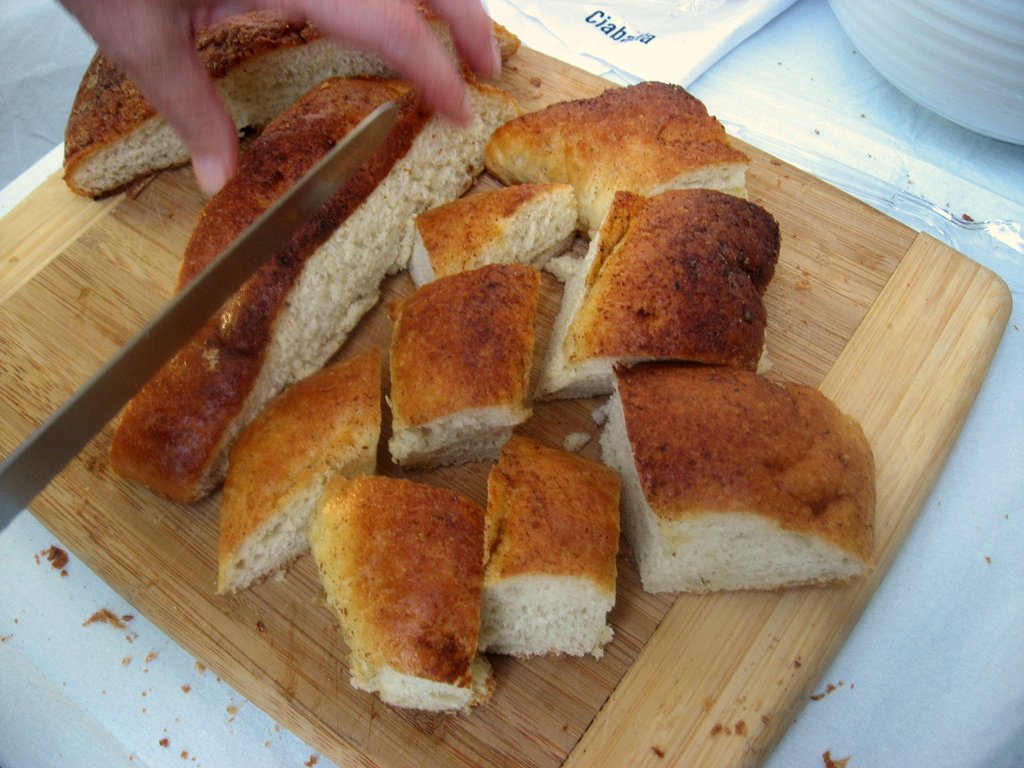 homemade bread with Cajun spices
homemade bread with Cajun spices
 cornbread muffins
cornbread muffins
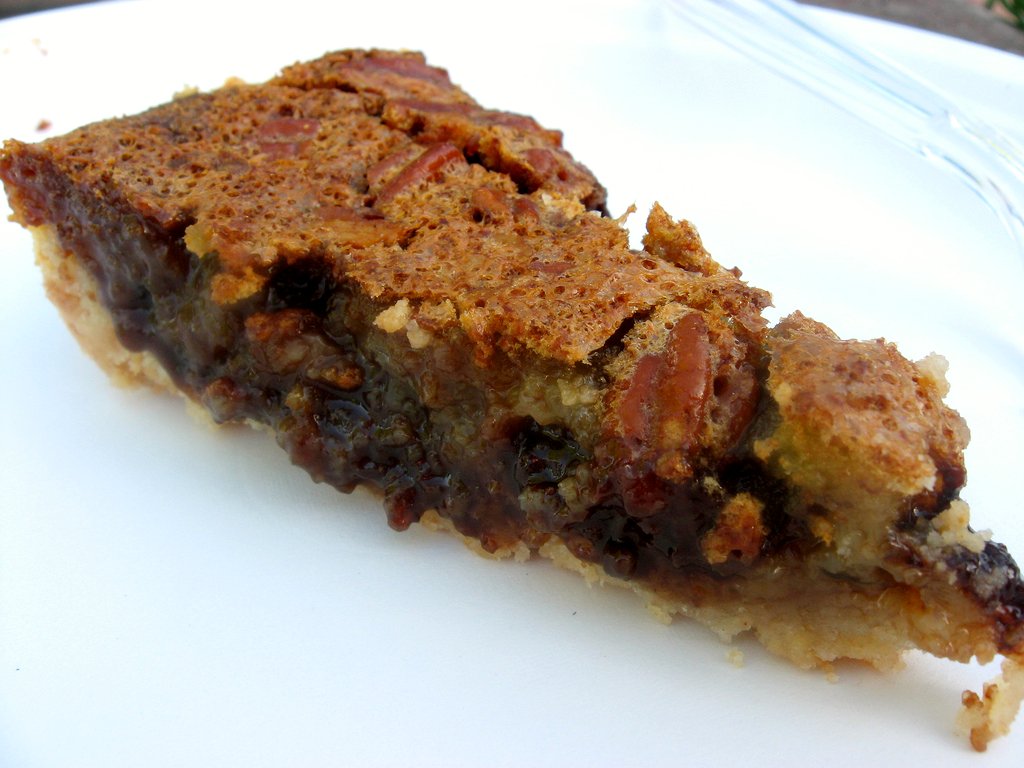 and chocolate-pecan-bourbon pie (of which I had gleefully more than my fair share).
and chocolate-pecan-bourbon pie (of which I had gleefully more than my fair share).
Not pictured are a fruit salad, Louisiana hot links, french bread, and about three bowls of rice (both the gumbo and the etouffee are intended for topping bowls of rice).
What's your favorite New Orleans dish?
 red beans and rice (this picture doesn't do the dish justice. The way the meaty juices soak into the rice...)
red beans and rice (this picture doesn't do the dish justice. The way the meaty juices soak into the rice...) shrimp etouffee; made off a potholder recipe from New Orleans no less
shrimp etouffee; made off a potholder recipe from New Orleans no less potato and bacon salad (yes, I said bacon)
potato and bacon salad (yes, I said bacon) homemade bread with Cajun spices
homemade bread with Cajun spices cornbread muffins
cornbread muffins and chocolate-pecan-bourbon pie (of which I had gleefully more than my fair share).
and chocolate-pecan-bourbon pie (of which I had gleefully more than my fair share).Not pictured are a fruit salad, Louisiana hot links, french bread, and about three bowls of rice (both the gumbo and the etouffee are intended for topping bowls of rice).
What's your favorite New Orleans dish?

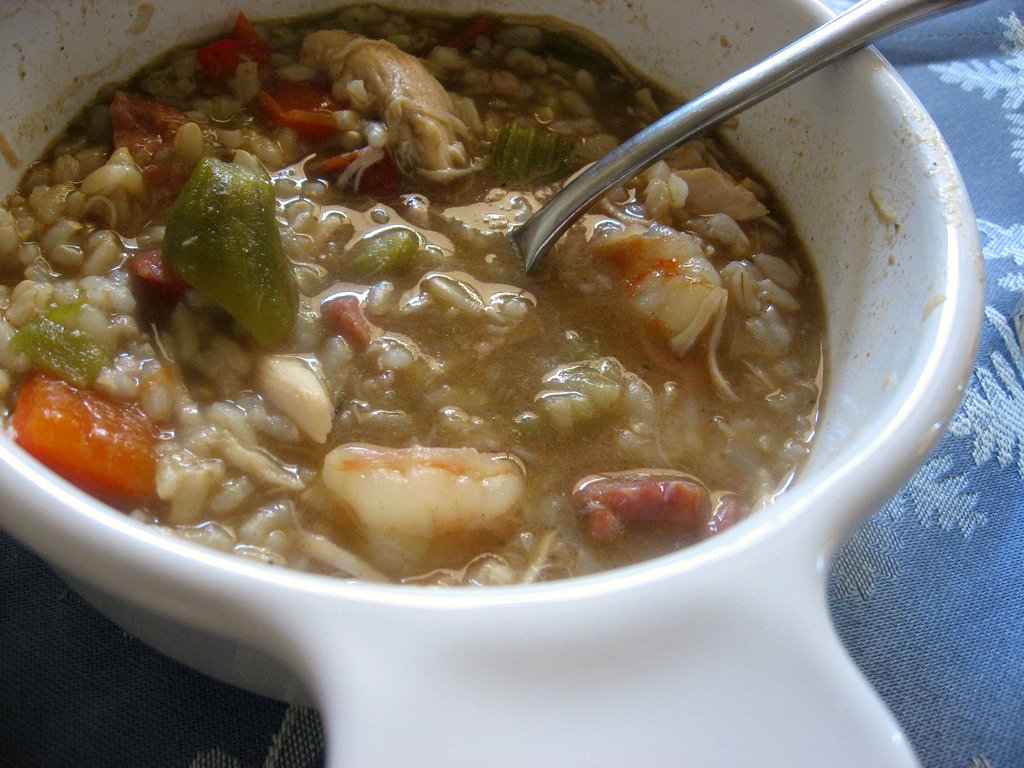

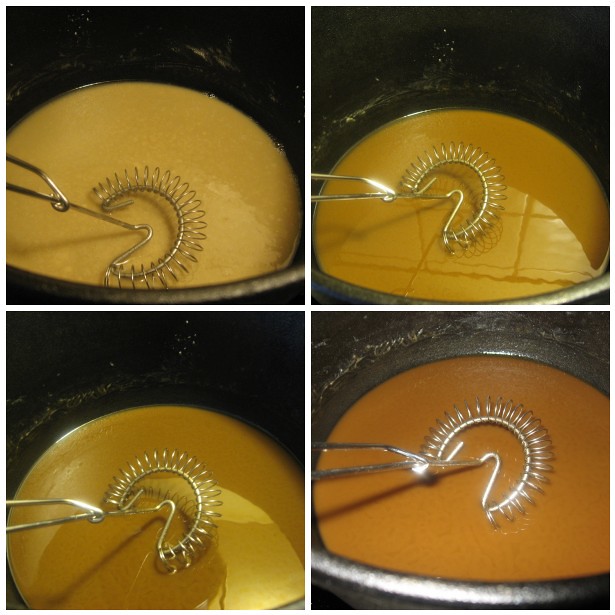

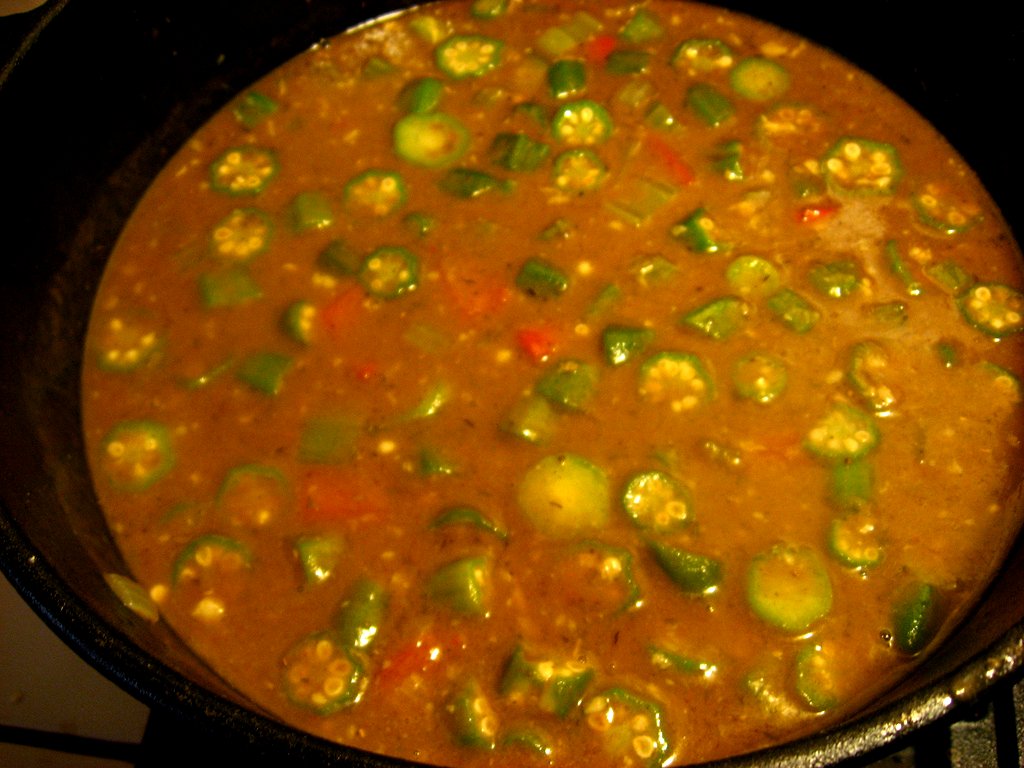
No comments:
Post a Comment
I'd love to hear from you! Share thoughts, comments, reminisces of delicious things you've eaten, opinions, suggestions, knowledge, questions...